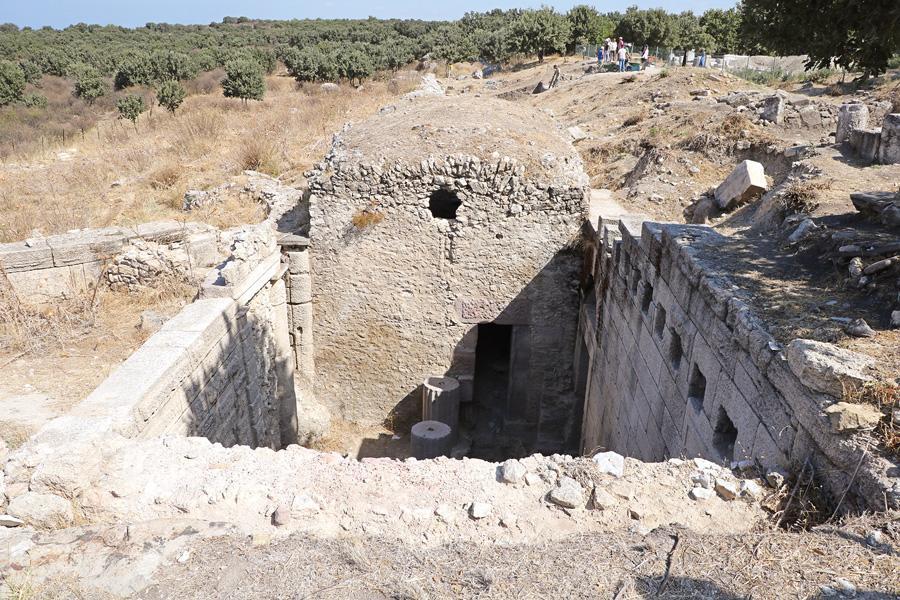
Experts have been working to uncover the architectural details of structures in a forum area in the ancient city of Alexandria Troas.
Located close to the sea around Dalyan village in the northwestern province of Çanakkale’s Ezine district, the ancient Greek city Alexandria Troas was home to the most important granite quarries. Excavations started in July in the ancient city and continue with a team of 30 people including architects, restorers, archaeologists and anthologists.
According to the plan drawn, the eight-kilometer-long city walls can be seen in Alexandria Troas, which covers an area of 390 hectares and is considered to be one of the largest ancient cities in Anatolia.
Head of the excavations and Ankara University Archaeology Department member Associated Professor Erhan Öztepe said that they will work in the area until the first week of October.
“Many areas have been excavated so far, but to be specific to this year, we are carrying out our works to reveal the architectural details of various buildings in the area we call ‘forum’ in the center of the ancient city, which is quite large,” he said.
Öztepe said that mentioned that they would work in the odeon structure next year.
“We care about this structure because an inscription, written during the reign of the Roman Emperor Hadrian and addressing the artists of Dionysus, was found 13-14 years ago. This inscription is currently on display at the Museum of Troy. It shows us the importance of both the odeon and the theater on the upper terrace for the city, as well as the existence of a theater troupe here. Therefore, the studies carried out in this odeon will provide us archaeological findings that will support this fact,” he added.
Öztepe said that the overall area had a great archaeological potential.
He pointed out that although the studies progressed slowly, they reached important data every year.
“We process these data and share it with the press, the public and the scientific world. We will share the results of this year’s work in the coming days. I believe we have important data. Studies will continue with the same determination.”
[HH] Vine growing inside pithos examined
Öztepe said that a grapevine bloomed in a 1,500-year-old pithos, which was found in previous excavations.
Stating that they examined the pithos, which was found in the eastern portico of the forum, Öztepe said, “Archaeological sites are valuable areas that need to be protected with their landscapes as well as with their remains. In the landscape of this area, this vine is so important that it adds so much beauty. This vine may have had a root there, or it re-emerged by chance after 1,500 years. Such examinations are carried out in Turkey using the seed that is found in various containers; we started to obtain seeds of some cereals used by ancient Anatolian people again. Research is done on these seeds. Perhaps it will also be possible to produce seeds for new production. In this sense, we think that this vine is a good sign.”
Öztepe said that scientists of Ege University Faculty of Agriculture had taken leaf samples to make studies on this vine.
“The results of the study, can give clues about the type and history of the vine,” he said, adding, “If it starts to grow and give grapes, maybe we will be able to learn its type. We are determined to protect it in this landscape, where we found the pithos.”